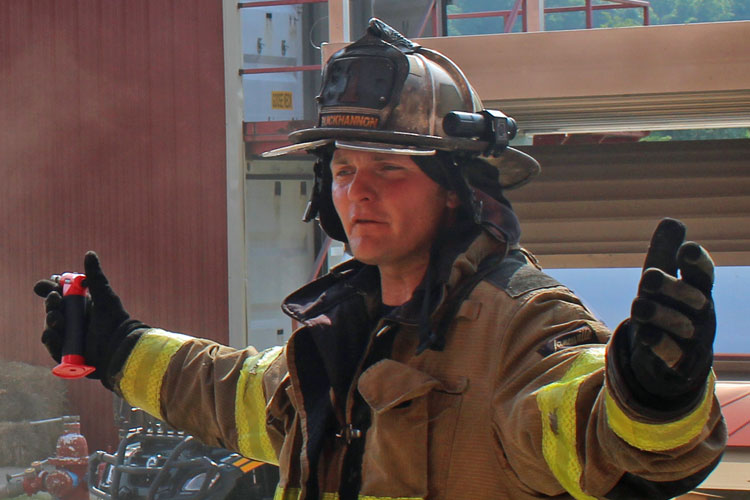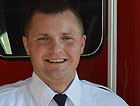

By Joey Baxa
In March 2018, college basketball fans like myself were glued to their televisions. March Madness was in full force, with many of the NCAA’s elite programs being represented once again. However, this year’s journey for the Kentucky Wildcats was anything but normal. John Calipari, who is usually known for having a team centering around one or two young superstars, was now using seven freshmen.
One ESPN analyst stated that this year has been one of Calipari’s greatest coaching performances because of his ability to adapt. He had altered his coaching and playing style to suit the needs and abilities of his players. Many other coaches have solidified their legacy as exemplary leaders in the same fashion. If you are not a self-proclaimed college basketball nut, you might be wondering what this has to do with firefighting.
These coaches are in a position that is not unlike many of America’s fire chiefs or company officers. We have very limited recruiting pools and a problem mustering a response force that would be deemed sufficient by national standards.
RELATED: Halton: Company of Companies | Time Well Spent in the District | Recruiting and Retaining Members
Although fixing recruitment and retention is a problem to address, we must face the current situation and plan to fulfill our mission. The situation for some is compounded even more by a lack of funding, minimal water supplies, or aging equipment. Times and issues such as these require leaders to be tactically authentic.
What is Tactical Authenticity?
“Authenticity” in this sense refers to knowing your department and response area and adhering to tactics that tailored to those specifics. Furthermore, tactical authenticity involves thoroughly knowing the details of the organization, understanding how the identity of the organization impacts operations, and developing a tactical skill set that will be effective in combating given situations. In my travels and experiences, I have found this to be effective but not widely practiced. Many leaders simply adopt the practices of an idolized department or those of a bigger and busier local department. The argument to be made is that there should be some variety in tactics based on organizational differences.
It is not hard to find a difference in tactics among the fire departments throughout the United States. Finding opinions about each of those tactics is even less difficult. Many times, what is missing with each of these claims is a lack of perspective for the other department’s situation.
Knowing the Organization
To build tactical authenticity within a fire department, its leaders should know their organization’s strengths and weaknesses. If you don’t have many firefighters, that would be an obvious weakness. However, maybe you have short response times as a strength. Many times, departments focus too much on the strengths and weaknesses of the departments around them. Ask tough questions about your own agency and use data to get truly objective answers. By using data concerning response times, personnel response statistics, training records, and physical capabilities, you will take emotions out of the analysis.
Researching this data shouldn’t be unfamiliar to anybody who has performed some sort of risk analysis within their department, applied for a federal grant, or been part of an ISO audit. However, the level of detail should be taken to a more intimate level. Nobody should know more about the organization than its leaders.
As a leader, while gathering this data you should also listen to the thoughts of community members. This will provide great insight into the expectations, opinions, and difficulties originating outside of the organization. Although meeting national standards is important, meeting the needs and expectations of those we are serving will hold a greater daily impact.
Identity Affects Operations
After building an understanding of your organization’s strengths and weaknesses, consider what opportunities the strengths grant us and what risks are created by our weaknesses. For example, a combination department may have a quick, immediate response to a fire with a three-man engine company. However, they are backed up by volunteers who respond from home and provide plenty of additional manpower after a 10-minute response time. This creates a great strength of a quick initial engine to handle smaller fires before they have the opportunity to grow and the chance to make any immediate rescues. However, it also creates an enormous risk if the crew was to encounter a large fire or if a crewmember was to get in trouble.
These opportunities and risks should be communicated to the members of the fire department. This is the start of developing your game plan for the incidents to come, just as a basketball coach would outline to his team the things they needed to do and not do to win the game. However, our “do’s” and “don’ts” carry much higher penalties than a simple mark in the win or loss column.
It is also beneficial to relay some of these opportunities to those outside of your organization. If the community knows the challenges you face and the opportunities you have to excel, then they will generally be much more supportive with funding. This can also help create more realistic expectations if initial expectations were beyond department capabilities.
Developing Tactics
Realizing the opportunities and risks laid out before us allows us to make more intelligent and informed decisions about equipment purchases, training needs, and how we will allocate our resources. As leaders, we can determine what equipment, knowledge, skills, and abilities are essential to our crews being able to protect life and property. The equipment they are provided must be easily deployed by the firefighters available. Having the latest and greatest technology is no good if you don’t have enough firefighters or they aren’t capable of using it. The same could be said for being able to maintain said equipment. Purchasing equipment without funding to maintain it is a wasted investment for the community and responders.
Training plays an even more essential role in obtaining tactical authenticity because it generates understanding and proficiency. If numbers are a problem, then we need the firefighters we have available to be of good quality. Building the link between knowledge and skills is the ability to read the confronted situation and apply the skills that mitigate the situation. This ability to think critically doesn’t come from war stories told over a cup of coffee. It is developed through realistic training and a decisive, forward-thinking mindset.
In obtaining tactical authenticity, it is also beneficial if training generates new ideas that are specific and applicable to faced situations. More specifically, an in-depth understanding of fire behavior will generate effective tactics to be used by your department in extinguishing fires. It will also help in deciding tactics that would be ineffective or detrimental to your department’s efforts based on available resources. There are many topics that could enhance tactics across a variety of incident types.
*
Throughout all of this, it is imperative that we understand our mission never changes. We still operate with the same obligation to protect lives and property. No matter the situation, this can still be done in an assertive manner that meets our duty to act. The type of equipment or skill you choose does not dictate this by itself. That is decided solely by your intent and determination to prevail.
Our ability to fulfill the mission will only be enhanced by being tactically authentic. A thorough understanding of who we are as an organization, how our identity affects our operations, and developing our tactical skill set to combat given situations will create a department that will serve any community very well.
 Joey Baxa is a lieutenant for the Buckhannon (WV) Fire Department, where he has served since 2006. He is a certified Instructor III and Adjunct Instructor for West Virginia University Fire Service Extension. He also serves as a Technical Consultant for Project Kill The Flashover.
Joey Baxa is a lieutenant for the Buckhannon (WV) Fire Department, where he has served since 2006. He is a certified Instructor III and Adjunct Instructor for West Virginia University Fire Service Extension. He also serves as a Technical Consultant for Project Kill The Flashover.


